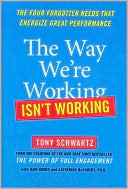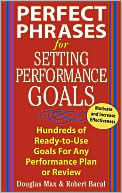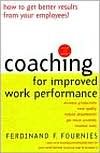The Art of Managing Professional Services: Insights from Leaders of the World's Top Firms
About the Author Maureen Broderick is founder and CEO of Broderick & Company, one of the few consulting firms that focus exclusively on professional services. Broderick & Company provides strategy, research, and thought leadership services to many of the world's leading firms.Before founding Broderick & Company in 1996, Maureen spent close to 20 years working in-house for industry leaders ranging from Price Waterhouse and Booz Allen Hamilton to the law firm Brobeck, Phleger & Harrison...
Search in google:
“High praise for Maureen Broderick…. Her book gives firm leaders a step up in competing on the global landscape.”—James Turley, Chairman and CEO, Ernst & Young“Anyone involved in the management of a professional service firm will find real value here.”—David Childs, Global Managing Partner, Clifford Chance“Maureen Broderick brings shape and clarity to the vital, but abstract, essence of professional service firms.”—Ralph Shrader, Chairman and Chief Executive Officer, Booz Allen Hamilton“Broderick’s book is filled with best practices that will help all kinds of companies—whether they are professional service firms or not—meet the challenges of doing business in the 21st century.”—Ray Kotcher, Senior Partner and Chief Executive Officer, Ketchum“Every professional service partner—and aspiring partner—should read this book.”—Paul Laudicina, Managing Officer and Chairman, A.T. Kearney“This comprehensive overview of best practices from the world’s leading firms will resonate with leaders and managers.”—Eric Friedman, Executive Partner, Skadden, Arps“The takeaways are fantastic!”—Andy Cohen, Co-CEO, Gensler“One only needs to read this book to realize that managing a professional service firm is very much an art, if not a science, worthy of its own special study and examination.”—Mike Goss, Managing Director and COO, Bain CapitalBuilding and managing a professional service firm is very different from running a product-based business. Infrastructure, governance, talent acquisition and retention, and compensation and financial management vary significantly from traditional corporate environments. Conventional management advice doesn’t offer all the answers, and mainstream business gurus rarely address the unique challenges facing professional service firm leaders.The Art of Managing Professional Services is one of the most comprehensive, research-based guides to firm management ever written for the industry. Based on more than 130 in-depth interviews with leaders of the world’s top firms, the book offers practical, proven, best practices on how to tackle the ten critical areas that firm leaders must monitor to build and maintain a strong organization: vision, values, and culture; people; clients; services; finance; positioning; partnership; strategy; structure; and leadership style.Maureen Broderick draws on her 30 years of experience in professional services to explore both the art and science of running a high performance firm. She presents tangible processes and programs–including 40 featured best practices–that readers can tailor to their own organizations and cultures. Inside you will learn:• How to create and maintain a shared vision, values, and culture• Best programs to recruit, train, and retain great people• Strategies to develop and manage a profitable portfolio of clients• What it takes to innovate services and share knowledge• The key metrics to monitor financial health• Insights into effective positioning, marketing, and selling firm services• Proven practices for rewarding and managing the partnership• A guide to both long-term and annual strategic planning• Balancing structure and governance in a consensus-driven organization• Secrets for leading “incredibly smart and independent people”
Foreword by Jay Lorsch xvAcknowledgments xviiAbout the Author xxiIntroduction 1Chapter 1: Professional Services 9Characteristics, challenges, and leadership modelCommon Characteristics of Successful Firms 10It’s Not All Good News 13The Broderick PSF Leadership Model 14Chapter 2: Shared Vision, Values, and Culture 17Building, communicating, and maintainingFive Essentials of Vision, Values, and Culture 20Embedding Values and Culture 22The Reinforcement of Values and Culture Begins with Recruiting 23Telling the Firm’s Story Reinforces the Culture 24Teams Teach You How to Live and Work in the Firm 24Constant Communication Is Critical 25Celebrate and Reward Good Behavior 28Making Values Stick 28Revitalizing Vision, Values, and Culture 31Chapter Summary 38Chapter 3: People 39Recruitment, training, and evaluationSeven Essentials of Talent Management 41Recruiting: Refreshing the Ranks 43Interviewing and Selection: Choosing the Best Candidates 46Mapping a Career Path 47Training: Fostering Connectedness and Commitment 51Mentoring: Providing Personal and Professional Support 55Performance Evaluations: Frequent and Thorough Feedback 60Diversity Looms Large–and Will Continue to Pose a Major Challenge 62Chapter Summary 63Chapter 4: Portfolio 65Strategy, client mix, and relationship managementFive Essentials of Client Portfolio Management 67Mastering the Client Management Life Cycle 69Step One: Strategically Plan and Review the Client Portfolio 70Step Two: Onboard New Clients 75Step Three: Sustain and Grow Accounts 76Step Four: Solicit Client Feedback 88Step Five: Review and Measure Results 91Chapter Summary 94Chapter 5: Services 95Strategy, innovation, and knowledge sharingFour Essentials of Successful Service Portfolio Management 97Follow the Service Strategy Cycle 98Step One: Review the Service Portfolio 99Step Two: Stimulate and Capture New Ideas 102Steps Three and Four: Select the Best Ideas, and Take Them to Market 108Step Five: Share Knowledge 111Four Essentials of Knowledge Management 112Chaper Summary 119Chapter 6: Finance 121Planning, metrics, and reportingHow Do the Top Firms Manage Finance? 123Financial Planning and Budgeting 124Forecasting 126Metrics to Monitor the Business 127Revenue 129Profitability 130Utilization 131Pricing 132Leverage 136Performance Efficiency 137Early Warning Signs 138Reporting 139Transparency and Accountability 142Chapter Summary 146Chapter 7: Positioning 147Brand, marketing, and salesFive Elements of a Successful Market Strategy 149The Power of Brand 151Determine the Market and Brand Positioning 151Embed and Build the Brand 155Keep the Message Clear and Consistent 160Regularly Test Brand Strength 160Marketing 161Sales 162Building a Marketing and Business Development Plan 164Firm-wide Brand Initiatives 164Business Unit Plans 166Master Plan, Timeline and Budget, Tracking and Measurement 167Thought Leadership: The Most Powerful Way to Grow the Business 170The Role of the Marketing Professional 175Areas of Focus for the Marketing Department 177Chapter Summary 182Chapter 8: Partnership 183Equity, selection, and compensationSix Characteristics of Enduring Partnerships 184Selecting an Ownership Structure 186Advantages and Disadvantages of Ownership Structures 187Public Versus Private 192To Sell or Not to Sell 195Equity Programs to Attract and Retain the Best 197Rewarding the Partners: Dividing the Pie 203Distribution Models 203Evaluating Performance 205Partnership Performance Criteria 208Partnership Selection: A Pivotal Decision 211Criteria for Promotion to Partnership 212Partner Promotion Process 213Chapter Summary 216Chapter 9: Strategy 219Process, responsibility, and accountabilityWhy Strategic Planning Matters 221Five Essentials for Successful Strategic Planning 223Orchestrating the Planning Process 226Long-Term Planning 227Annual Planning 231Review, Monitor, and Update 232Accountability 234Chapter Summary 236Chapter 10: Structure 237Design, governance, and styleWhy Getting It Right Is So Challenging 239Seven Essentials for a Successful Infrastructure and Governance Model 240Organizational Structure: The Scaffolding That Supports the Firm 243Board of Directors: Composition and Selection 244Chairman: Selection and Role 247CEO: Selection, Role, and Succession 248Management Committee: Composition and Selection 253Business Units: Structure and Seat of Power 254Other Functions/Special Initiatives 257Administrative Support 257Changing the Structure 258Governance Style 259Chapter Summary 263Chapter 11: Style of Leadership 265Characteristics, grooming, and adviceEssential Characteristics of a Successful Leader: Emotional Intelligence and People Skills 267Good Influencer/Builder of Coalitions 268Inspirational and Passionate 268Visionary 268Good Listener 269Good Communicator 271Understands the Business 274To Bill or Not to Bill 274Grooming a Global Leadership Corps: Finding and Nurturing Future Leaders 278Some Parting Advice for Leaders 284Author’s Note 286Index 287Lessons from LeadersChapter 2: Shared Vision, Values, and CultureTeaming at Cravath 26Booz Allen Hamilton Core Values 29Edelman Revisits Vision and Values 32Korn/Ferry Changes Its Vision and Culture 34Chapter 3: PeopleRecruiting at ghSMART 48Career Development at Booz Allen Hamilton 50Latham & Watkins Multistage Career Training 53Training at Bain & Company 56Plante & Moran’s Team-Based Mentoring 59Chapter 4: PortfolioGrant Thornton Client Experience Program 77Black & Veatch Client Portfolio Mix 81Account Management at Burson-Marsteller 83Client Management at Ernst & Young 87Edelman’s Client Feedback Program 90Chapter 5: ServicesDeloitte Australia’s Innovation Program 104CSC’s Office of Innovation 107Knowledge Management at Grant Thornton 116Chapter 6: FinanceBlack & Veatch Forecasting Process 128Metric Management at Gensler 141ghSMART’s Budget, Dashboard, and Review Process 144Chapter 7: PositioningBrand Management at Skadden, Arps 156Euro RSCG Life Culture Scan 158Growing an Industry Program at Ernst & Young 168Thought Leadership at Booz & Company 174Chapter 8: PartnershipSlater & Gordon Becomes the First Law Firm to Go Public 193The Acquisition Process at Baker Robbins & Company 196Gensler’s Principal Evaluation Process 207Compensation Criteria at Eversheds 210Making Partner at Egon Zehnder International 215Chapter 9: StrategyPlanning at Peppercom 225Hewitt’s Planning Process 229Annual Planning at Ernst & Young 233Chapter 10: StructureClifford Chance Offshoring Program 242Election Process at Skadden, Arps 250A.T. Kearney Revamps Structure and Governance 261Chapter 11: Style of LeadershipOgilvy Public Relations Worldwide: Leading Growth 270KPMG: Leading Through a Crisis 272Clifford Chance: Leading Through Transition 275Cultivating Leadership at O’Melveny & Myers 281Emerging Leaders Program at Dewberry 283








